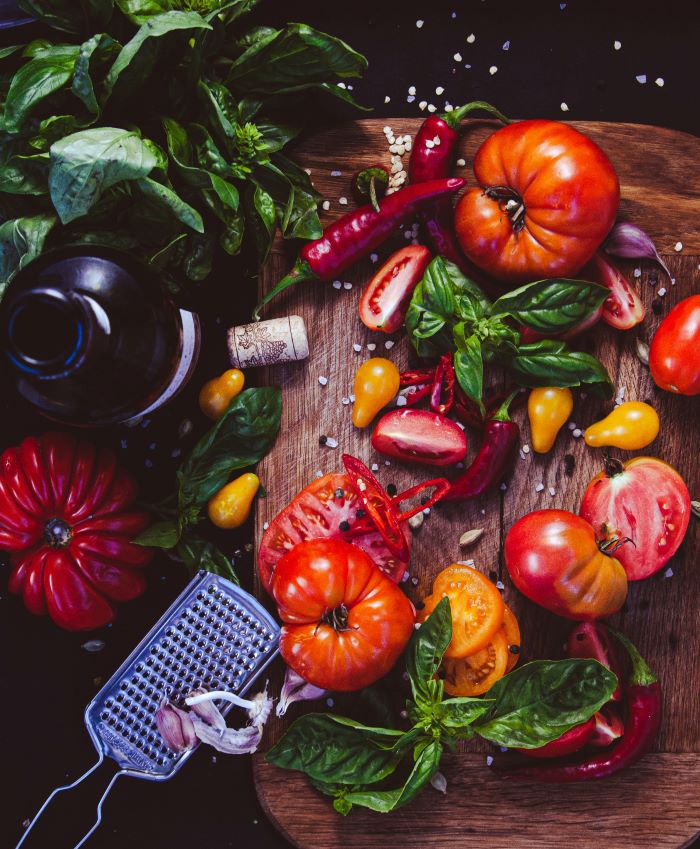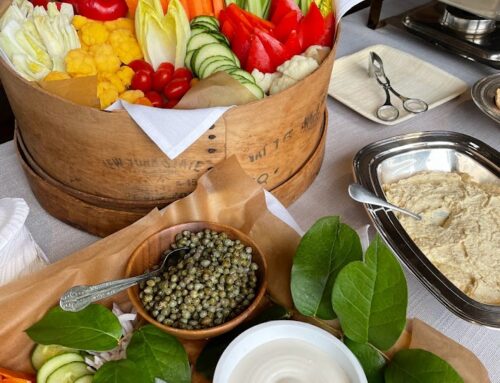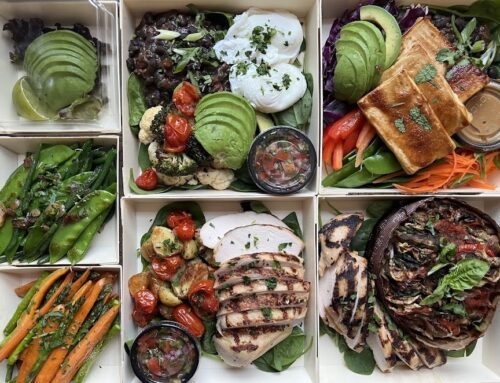Eat Local Because You Can

WHY CAN?
Chef Becky Geisel lives by the minimalist credo of taking only what you need and knows this is essential to feeding people now and into the future. Preserving items when able fits into her beliefs of reducing, reusing, and recycling and the abundance of summer produce now means you will eat well later in the year. Chef Becky has been canning all her life as her grandfather, Emmitt, tended a large garden with summer veggies. She recounts her earliest childhood memories including jars of preserved tomatoes, cucumbers, and peaches on a shelf in her grandmother’s pantry at her home. The Chef grew up surrounded by sustainable influences due to a rural, ag-centric environment which impacted her approach to food before the farm-to-table and “eat-local” movement became popular.
When it comes to canning tomatoes, Chef Becky has these things to share. Leaving the skins on makes the canning process simpler for all levels of people to participate in, thus increasing accessibility to this craft, easier means more people will attempt it. There is no need to buy fancy equipment or go through the extra effort to enjoy the benefits of the preservation process. Plus skins contain vitamins and fiber and are better to include than waste them by discarding them. Some might say that if you keep the skins on your tomatoes that you may need to adjust your acidity level as skins can be acidic. Chef Becky recommends keeping the sauce basic and adding fresh herbs and seasonings when using the prepared sauce after canning. This gives the sauce more adaptability and it can be used in more applications, not just Sunday sauce or gravy.
Fruits of Your Labor
Some Chef inspirations for using your canned tomatoes include tomato jam to freshen up your favorite sandwich, and tomato chutney to accompany pork or fish. Chef also recommends adding them to your favorite saute or braising dish when the cold weather sets in, such as adding canned tomatoes to flavor braised beef or butternut squash.
When canning, the purpose of using citric acid is to preserve and reduce the growth of bacteria. Lemon juice and white vinegar can do the
In a traditional water bath canning method, boiling liquid is added to sterilized jars and these combine to reduce bacteria. Reducing bacteria allows the contents to be stored, thus preserved, for longer periods of time.
Although all tomatoes can be canned, certain types of tomatoes do work best. Chef prefs plum tomatoes for their fewer seeds and juice which will help speed up the process and provide a meatier body. Chef has grown plum tomatoes in her own kitchen garden including varieties such as Roma, San Marzano, and Big Italian Heirloom.
About the Chef
Chef Becky can be found giving whole food advice, and preparing healthy cuisine for celebrations along with expertly inventing everyday dishes at her popular cafe in rural Hunterdon County, New Jersey.







